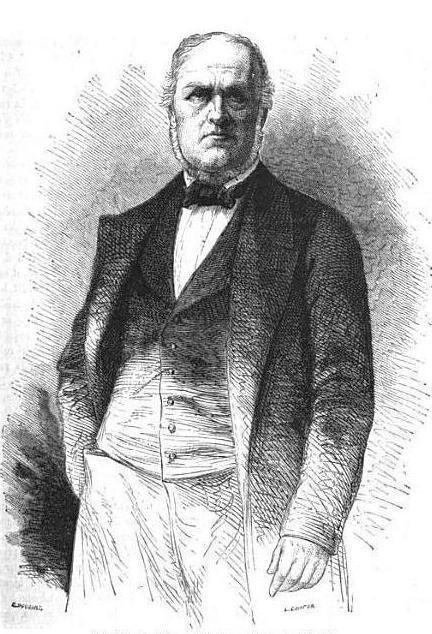 | ||
Parents Charles-Paul d'Albert de Luynes Children Honoré Louis Joseph d'Albert de Luynes Grandparent Louis-Joseph-Charles-Amable d'Albert de Luynes Great-grandparent Charles Louis d'Albert de Luynes | ||
Honoré Théodore Paul Joseph d'Albert, duc de Luynes (Paris, 15 December 1802 – Rome, 15 December 1867), inheritor of several French titles as duc de Luynes, de Chevreuse et de Chaulnes and an immense fortune, who cut a figure of grand seigneur and supported the exiled comte de Chambord's claim to the throne of France, is remembered most for the collection he gave to the Cabinet des Médailles in 1862.
Contents
Biography
His youthful Grand Tour to Italy was marred by the death of his companion, his cousin Henri de Montmorency-Laval; he returned to join Louis XVIII's garde du corps and in 1822 married Marie Francoise Dauvet de Maineville, daughter of the marquis de Maineville. After her premature death, 23 July 1824, he returned to Italy, consoling himself with researches at the site of Metapontum in the Kingdom of Two Sicilies, which he published, and at the age of twenty-eight was received by the Académie des Inscriptions et Belles-Lettres; his archaeological interests ranged from ancient numismatics and ceramics, the subject of his collections, to recovering the secrets of damscening steel: he received a silver medal for his blades at the Exposition of 1844. He offered a prize of 8000 livres for the first successful process of photolithography while he was assembling at his château de Dampierre one of the finest contemporary natural history collections in France. His collection of ancient coins, medals, engraved stones and Greek vases, he donated to the Cabinet des Médailles. His archaeological interests took him as far as the Dead Sea and to Petra, in May 1864
At Dampierre he commissioned extensive renovations under the antiquarian architect Félix Duban, who had restored the Château de Blois. Paintings by Marc-Charles-Gabriel Gleyre and Jean-Hippolyte Flandrin graced the gallery walls that were hung with red velvet, against which Luynes also mounted trophies of his antique arms, the prize piece of which was the ceremonial sword of Youssuf, son of Boabdil, the last Moorish king of Granada; it followed Luynes' collections to the Cabinet des Médailles. He was quite naturally the head of the committee reporting on metalwork at the Great Exhibition of 1851, and published his findings.
He was also a patron of living classicizing artists, with varying success. In 1840 he commissioned Marc-Charles-Gabriel Gleyre to paint murals in the Grand Gallery at Dampierre, but after Gleyre had worked on them for a year, with the prospects of fame before him, the installed decorations were effaced when Félix Duban inspired Luynes to commission Jean Auguste Dominique Ingres, recently returned from Rome, to paint large canvases for the Gallery instead. Ingres insisted on frescoing the gallery at Dampierre with the grand subjects Luynes requested, The Age of Gold and The Age of Iron, rather than providing canvases. Ingres installed himself enthusiastically at Dampierre for the project, for which the gallery was replastered to his orders; many drawings and sketches for the proposed works survive, and Luynes' classicizing bent encouraged Ingres' obsessive search for suitable inspiration but Ingres' ardor cooled by 1847, and the contract was eventually cancelled in 1850. From François Rude Luynes commissioned a sculpture of the king who had founded the fortunes of his family; the Louis XIII as a Child was cast in silver rather than bronze. For the Penelope of the sculptor Pierre-Jules Cavelier he paid more than the sculptor asked, and he commissioned Pierre-Charles Simart to recreate the Athena of Phidias, in ivory and gold, based on ancient descriptions: "it cost Luynes a hundred thousand francs to prove that Simart was not Phidias". The bloodstone cup with enamelled gold mounts made for him in 1854-55 by Jean-Valentin Morel, who pioneered the taste for gold-mounted hardstones in neo-Renaissance taste, is now at the Indianapolis Museum of Art.
His politics were liberal. He took an active part in the Revolution of 1830, equipping and arming at his own expense a contingent of National Guard, but refused the offer from the July Monarchy of a pairie but consented to be appointed a representative of the Second Republic, 1848–51, where his role was that of an independent, before he withdrew to Dampierre with the rise of Napoleon III. He was awarded the Prussian order Pour le Mérite in 1853. Yet he died at Rome, a defender of the Papacy against the resurgent powers of a united Italy.
He married secondly, 19 March 1846, Jeanne d'Amys de Ponceau (died at Dampierre 26 July 1861)
Publications
Luynes was responsible for numerous papers and reports. His major publications are:
